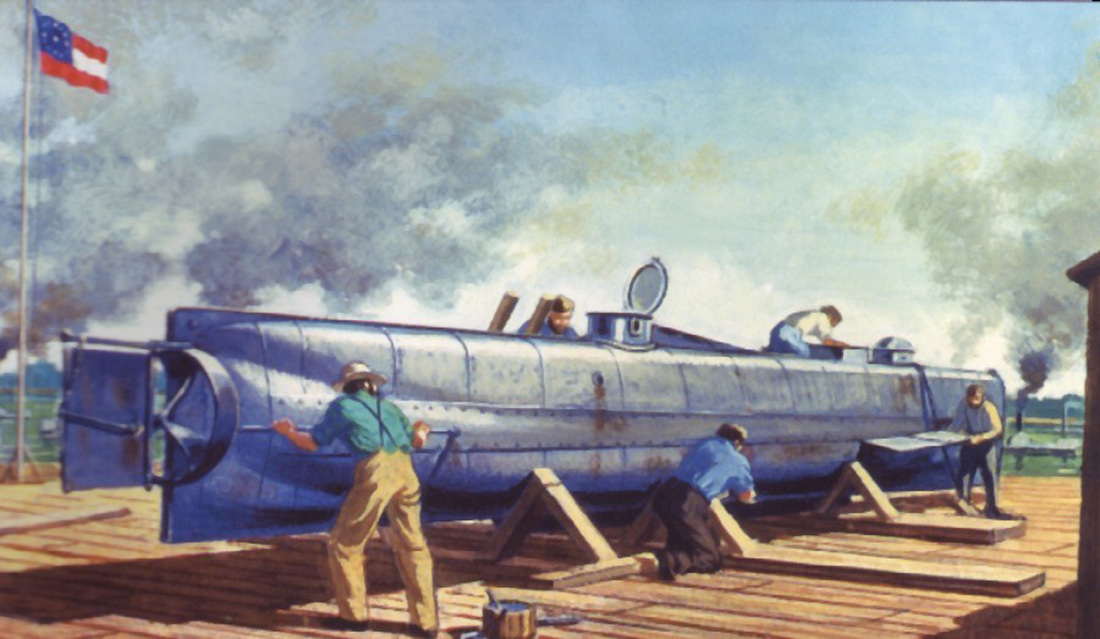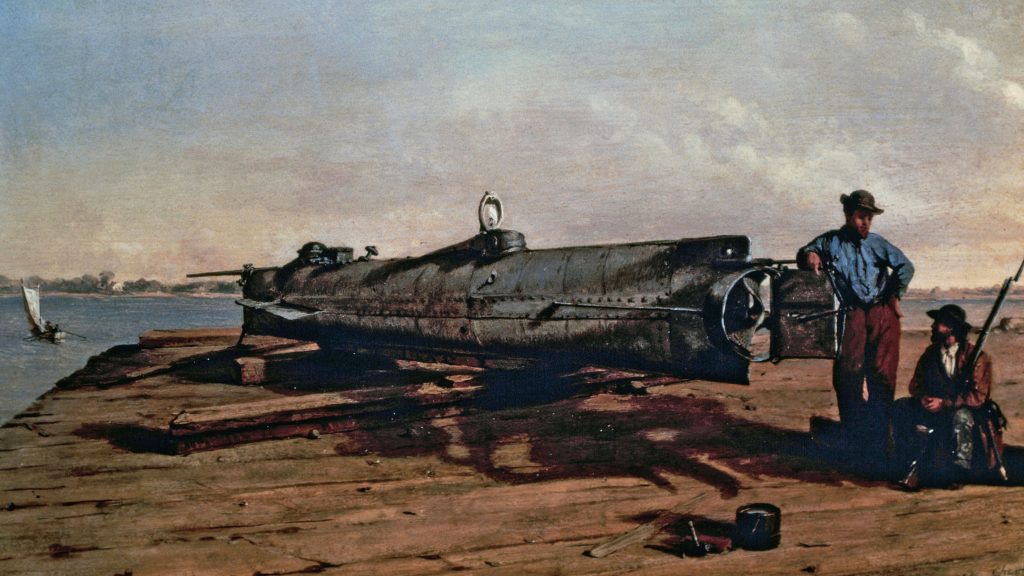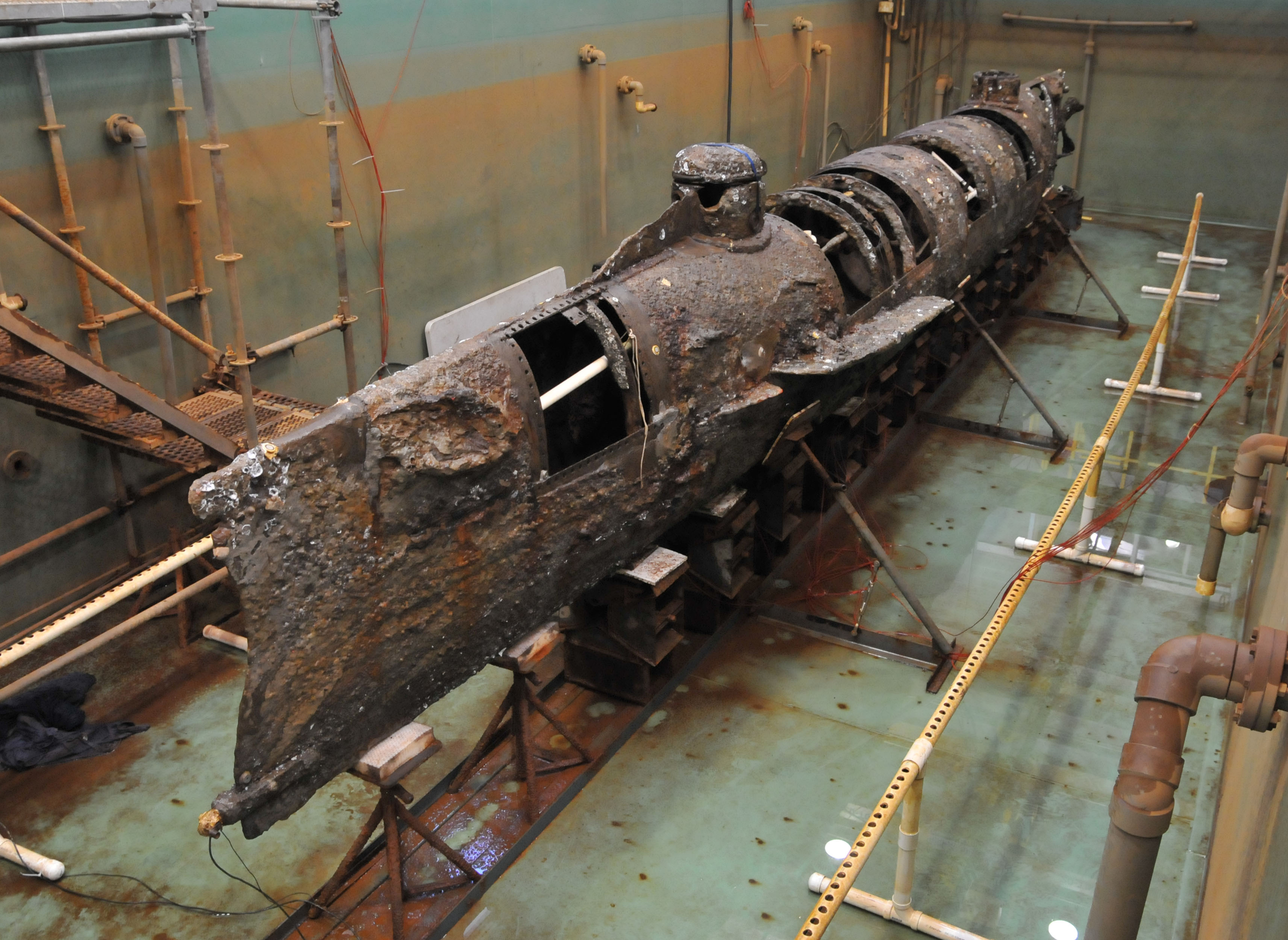

Hunley was sent out to complete its task.Īfter successfully deploying the spar torpedo (a rudimentary bomb that was attached to the front of the ship by a long metal pole and rope) into the hull of the USS Housatonic, the Hunley’s torpedo successfully blew a hole into the Union sloop-of-war. With a crew of one officer, Lieutenant Dixon, and 7 volunteers of the Confederate military and the Confederate states, the C.S.S. The Hunley was assigned to break through the blockade of Charleston Harbor by Union ships on February 17 th, 1864. This can be reflected in what we see in over one and half centuries of naval warfare. This lay the foundation for future missions involving submarines, an evolution of submarines, and innovation in the global navies. While there had been previous attempts to use underwater ships to attack enemy vessels, none had ever been effective. Hunley is the first submarine in history to successfully sink an enemy ship. The crew inside of the ship would turn the crank to move it forward as it was steered by the captain at the front of the ship. The boat was first dropped off into the port by a ship after being transported by train to the seaside. Seven men, seated on a long bench, would grasp the long crank, and turn it together to power the vessel through the ocean. Hunley was powered by hand crank which required a team to operate.

It would be the submarine’s one and only mission.

It had been brought to Charleston via the railroad and then deposited into the harbor on the fateful day of February 17 th, 1864. Dixon to take out part of the Union blockade of Confederate ports.

Hunley was put to task under its new commanding officer, Lieutenant George E. Once the submarine was subsequently recovered, it was named after Mr. He, and the entire crew, perished during the second experiment on October 15 th, 1863, when it failed to resurface from its submersion. The Confederate military took over the tests, recovering the ship and resetting it for a new round of assessments, which Mr. Payne, accidentally opened a hatch and killed 5 of the 8-man crew. Hunley’s new undersea boat sank on August 29 th, 1863, during its first test when the commanding officer, Lieutenant John A. Hunley moved quickly to build a brand-new ship and continue his work. After the loss of the American Diver, Mr. Hunley was well versed in the production of submarines. Having financed the production of the Pioneer and American Diver alongside with James McClintlock and Baxter Watson, Mr. Hunley, also built in Mobile, was designed by Tennessean born lawyer and maritime engineer Horace Lawson (H.L.) Hunley, who, while living in New Orleans, was inspired by a call to action against the Union’s naval blockade of Confederate ports. The Pioneer, similarly, was abandoned after the Union captured New Orleans in 1862, and the American Diver was left at the bottom of the bay of Fort Morgan when it sank during a test run in 1863 near Mobile, Alabama. Alligator, which was set adrift by its transport ship in 1863 near Cape Hatteras when it encountered rough waters and bad weather. American Diver the Union had a comparable ship in production as of 1861, the U.S.S. The first two Confederate submarines were the C.S.S Pioneer and the C.S.S. The boat was commissioned during the American Civil War (1861-1865) and was the third Confederate iteration of preliminary submarines built in the 19 th century. The submarine measured approximately 40 feet (12 meters) in length and had a displacement of around 7.5 short tons. Hunley was a Confederate submarine, constructed in 1863 from a cylindrical wrought iron steam boiler plate, tapered at the bow (front) and stern (back) of the ship with customized fittings to make it both unique and useful for its purpose. I will refer to it in this article as the H.L. Hunley (named after its inventor Horace Lawson Hunley) or its sometimes called the C.S.S. The Hunley is often called different names. The events surrounding the Hunley are tragic, enigmatic, and intriguing, leaving historians, archaeologists, academics, and students of history searching for answers and knowledge about this strange and fascinating piece of American military history. Hunley was a landmark vessel used during the American Civil War and was the first submarine that effectively sank an enemy ship.


 0 kommentar(er)
0 kommentar(er)
